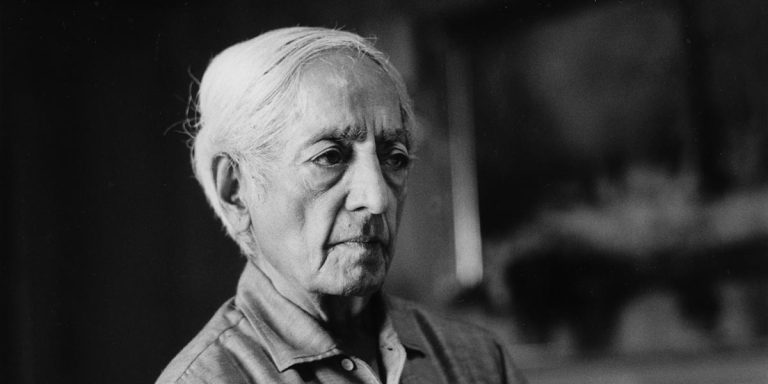
Jiddu Krishnamurti’s Death & Last Words
Jiddu Krishnamurti lived a life unlike any other. He was a teacher who refused to be called a guru, a revolutionary who rejected every form of dogma, and a seeker who never claimed to have found a definitive answer. His life was dedicated to awakening humanity to its own potential for freedom—freedom from fear, conditioning, and self-imposed limitations. It is only fitting that a figure so deeply immersed in the mysteries of life would have deep insights into its final frontier: death.
Krishnamurti’s teachings were steeped in the theme of impermanence. From his earliest lectures to his final days, he spoke about the necessity of understanding death—not as a distant event but as an integral aspect of living. For him, death was not to be feared, postponed, or denied. It was to be embraced, studied, and even lived. He invited his listeners to inquire into death with the same intensity and curiosity they brought to life, insisting that the two were inseparable.
As Krishnamurti approached the end of his own life, his physical form began to falter, but his clarity and presence remained unwavering. His death on February 17, 1986, in Ojai, California, marked the end of his physical journey but not the dissolution of his teachings. His final moments, including his last recorded words, are steeped in the same urgency and simplicity that characterized his life’s work.
The death of Jiddu Krishnamurti is not merely the closing chapter of a biography. It is a lens through which we can explore his philosophy in action, an embodiment of his lifelong message about the nature of mortality. This is not a story of sorrow or loss; it is an opportunity to delve deeper into the ultimate questions of existence: What is death? How should we meet it? And what does it reveal about the essence of life itself?
J Krishnamurti’s Death
Jiddu Krishnamurti’s death on February 17, 1986, marked the conclusion of a life dedicated to unraveling the mysteries of human existence. To understand the significance of his passing, it is essential to consider the circumstances surrounding his final days—both the physical reality of his declining health and the atmosphere of clarity and acceptance that characterized his approach to life and death.
Declining Health and the Final Years
By the time Krishnamurti reached his nineties, his physical body was frail, yet his mind remained as sharp and luminous as ever. His relentless schedule of travel and teaching, spanning decades, had taken a toll on his health. Despite his physical decline, he continued to address gatherings with the same intensity, often captivating audiences with his incisive insights into the nature of thought, fear, and freedom.
In his final year, he began to experience severe health issues. His energy waned, and the effort required to speak at public meetings became visibly taxing. Those who were close to him observed a quiet but unmistakable shift in his demeanor—a sense of readiness, as though he were preparing to step into the unknown that he had spoken of so often.
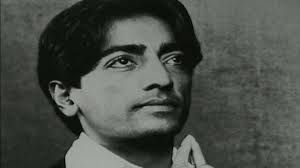
Krishnamurti spent his last months at his home in Ojai, California, surrounded by a small circle of close associates and caretakers. These individuals, many of whom had been with him for decades, described the atmosphere of his home as one of deep stillness and peace.
Facing Mortality with Clarity
Krishnamurti’s approach to his own death was entirely in keeping with his teachings. He did not seek to escape or deny the reality of his physical decline. Nor did he express fear or resistance. Instead, he met his final days with the same clarity and curiosity that he brought to every aspect of life.
He often remarked that death was not something to be postponed or feared but to be understood as an ever-present reality. In his final days, this understanding became palpable to those around him. They described him as fully present, entirely free from regret or attachment. His state of being was one of acceptance—not passive resignation but an active engagement with the process of dying.
Krishnamurti had always emphasized the importance of living with awareness, and his death was no exception. He did not view death as a contradiction to life but as its natural culmination. This perspective allowed him to face his final moments with a sense of openness and peace, offering a living example of the teachings he had spent a lifetime articulating.
The Presence of His Close Circle
During his final days, Krishnamurti was surrounded by a few close associates who had been integral to his work. These individuals, deeply influenced by his teachings, bore witness to the extraordinary stillness that seemed to envelop him as he neared the end. They described his presence as unwavering, a source of calm and inspiration even in the face of physical suffering.
Krishnamurti’s interactions during this time were sparse. He did not offer elaborate farewells or final instructions, consistent with his lifelong rejection of authority and dogma. Instead, he continued to embody the principles of freedom and inquiry that had defined his life. His very being, in those final days, served as a silent yet powerful message to those around him.
A Quiet Transition
Krishnamurti’s death itself was quiet and undramatic. On the evening of February 17, 1986, he passed away peacefully in his home in Ojai. Those present described the moment as deeply moving, not because of any outward display but because of the sense of stillness and simplicity that accompanied it.
His passing, like his life, was a reminder of the essence of his teachings: to live and die with full awareness, free from the illusions of time and self. For those who had been with him, it was not an ending but a continuation—a moment that reflected the timeless quality of the inquiry he had inspired in so many.
Jiddu Krishnamurti’s Last Words
The last words of any individual are often imbued with a sense of finality, serving as a distillation of their essence. For Jiddu Krishnamurti, a man who had spent a lifetime exploring the deepest truths of existence, his final words were both simple and profound. They were not a dramatic summation of his teachings but a quiet reflection of his state of being in those final moments.
The Nature of His Final Words
As Krishnamurti lay on his deathbed, surrounded by a few trusted companions, his final utterances were marked by humility and a quiet acknowledgment of the inevitable. Accounts from those present reveal that his last words were:
“I am not sure the body can take any more.”
These words, spoken softly and without sentimentality, capture the essence of Krishnamurti’s approach to life and death. There is no fear in them, no clinging to the body or resistance to its decline. Instead, there is a simple acknowledgment of the physical reality—a statement of fact delivered with clarity and equanimity.
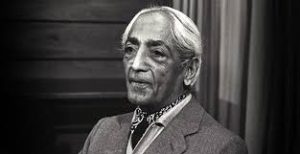
Krishnamurti’s final words are striking in their ordinariness. For a man who had spent his life deconstructing the illusions of thought and self, they reflect the simplicity that lay at the heart of his teachings. There is no need for grand declarations or mystical pronouncements; the truth, as he had always insisted, is found in the direct perception of what is.
Reflecting the Core of His Teachings
In many ways, Krishnamurti’s last words are a reflection of the core principles he spent a lifetime articulating:
- Acceptance of Reality: His words show a complete acceptance of the body’s limitations, a willingness to face reality without denial or resistance. This aligns with his teaching that freedom comes from seeing things as they are, not as we wish them to be.
- Freedom from Fear: There is no trace of fear or anxiety in his final moments. His clarity and presence suggest a mind that is free from the psychological constructs that often distort our experience of death.
- The Ordinary as Sacred: Krishnamurti always emphasized that truth is found in the ordinary moments of life. His last words, devoid of any pretense or artifice, embody this principle.
The Power of Silence
While Krishnamurti’s spoken words carry significance, it is perhaps the silence that surrounded them that speaks most profoundly. Those present at his bedside described a palpable stillness that seemed to transcend the physical event of his death. This silence was not merely the absence of sound; it was a presence, a living testament to the depth of his teachings.
Krishnamurti often said that silence was the true language of understanding, the space in which the mind could encounter the eternal. In his final moments, this silence enveloped him and those around him, serving as a powerful reminder of the timeless dimension he had pointed to throughout his life.
Interpreting His Final Words
It is tempting to analyze Krishnamurti’s last words in search of deeper meaning, but such an approach risks missing the essence of his message. Krishnamurti consistently warned against the tendency to seek symbolic interpretations or to imbue words with authority. His final words are best understood not as a riddle to be solved but as an expression of his presence in that moment.
The simplicity of his last words invites us to reflect on our own relationship with life and death. Can we meet the inevitable with the same clarity and acceptance? Can we let go of the need for finality or resolution and simply be with what is? In this way, Krishnamurti’s passing becomes not just a moment in history but an invitation to live and die with awareness.
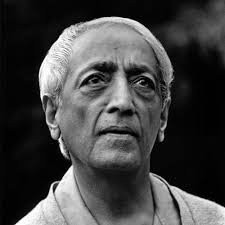
The Response of Those Close to Him
For those who had been with Krishnamurti in his final moments, his passing was deeply moving but not a cause for grief. They described a sense of gratitude for having witnessed the culmination of a life lived with such integrity and freedom. His death, they said, was a continuation of his teachings—a reminder that the essence of his work was not confined to his physical presence but lived on in the clarity and inquiry he inspired in others.
Krishnamurti’s Teachings on Death
Krishnamurti often said that to understand life, you must understand death. For him, the two were not opposites but facets of the same reality. He believed that humanity’s relationship with death—filled as it often is with fear, avoidance, and denial—was a mirror reflecting our misunderstanding of life. His teachings on death are not abstract theories; they are an urgent call to examine the very foundation of existence.
1. Death as Part of Life
“To understand death, you have to understand life,” Krishnamurti often remarked. This simple statement forms the cornerstone of his perspective on mortality. He urged his listeners to see death not as the cessation of life but as an inseparable part of it. Just as night follows day, death follows birth, and the two are intertwined in a seamless flow.
Krishnamurti rejected the cultural tendency to view death as an enemy or an aberration. He argued that this mindset creates unnecessary fear and fragmentation. To live fully, he said, is to accept the inevitability of death—not intellectually but as a living truth. Only then can life be experienced in its totality.
“Why do you separate living from dying?” he asked. “Living is dying—dying to the past, to your memories, to your attachments, to everything you hold on to.” This perspective challenges the conventional notion of life as something to cling to and death as something to avoid. Instead, Krishnamurti saw life as a continuous movement, a dance in which creation and dissolution are inseparably linked.
2. The Ending of Psychological Attachment
For Krishnamurti, the true significance of death lay not in the physical event of dying but in the psychological process it represents: the ending of attachment. He taught that much of humanity’s suffering arises from clinging—clinging to people, possessions, identities, and beliefs. Death, he said, is the ultimate confrontation with this clinging, for it takes away everything we hold onto.
He often asked his audiences: Can you live as though you are dying every moment? This is not a morbid question but an invitation to let go of the past, to free yourself from the weight of memory and expectation. To “die while living,” in Krishnamurti’s terms, is to experience the freedom that comes from complete detachment.
“Death is the ending of everything you know,” he said. “It is the unknown. And to meet the unknown, the mind must be free of the known.” This insight shifts the focus from the event of death to the psychological state in which one meets it. A mind that is bound by attachment and fear cannot approach death with clarity. But a mind that is free, that has already let go of its attachments, can meet death with openness and understanding.
3. Freedom from Fear
At the heart of Krishnamurti’s teachings on death is the question of fear. Why are we afraid of death? Is it the pain, the loss, the mystery? Or is it something deeper? Krishnamurti argued that the root of this fear lies in thought. Thought projects itself into the future, imagines its own extinction, and recoils in terror. This fear, he said, is not intrinsic to death itself but is a construct of the mind.
He challenged his listeners to confront this fear directly. “Do you ever look at death without trying to escape it, without trying to rationalize or explain it?” he asked. To Krishnamurti, the act of facing fear—whether it is the fear of death or any other fear—is the beginning of freedom. When you look at fear without resistance, without judgment, you begin to see it for what it is: a product of thought, a shadow cast by the mind.
In this seeing, fear dissolves. It does not require effort or willpower; it requires only awareness. “Where there is an ending of fear,” Krishnamurti said, “there is a new beginning. There is freedom.”
4. Death and the Timeless
Krishnamurti’s teachings on death often touch on the relationship between mortality and the timeless. He viewed death as a portal to a dimension beyond the confines of time, thought, and self. While life as we know it is bound by the cycles of time—birth, growth, decay, and death—there is, he said, a reality that transcends these cycles.
“The ending of the self,” he said, “is the beginning of something entirely new.” By “self,” Krishnamurti referred to the psychological construct of “I”—the collection of memories, desires, and fears that we identify with. Death, in its deepest sense, is the dissolution of this self, the end of the ego’s hold on consciousness.
This does not mean annihilation; it means liberation. In the absence of the self, Krishnamurti suggested, there is a direct encounter with what he called “the eternal” or “the immeasurable.” This is not a mystical concept but a lived reality, accessible to anyone willing to look beyond the boundaries of thought and identity.
5. A Living Inquiry
Krishnamurti never claimed to have definitive answers about death, and he discouraged his followers from seeking such answers. Instead, he emphasized the importance of inquiry—a deep, personal exploration of the nature of mortality. He encouraged his listeners to ask their own questions, to observe their own minds, and to discover the truth for themselves.
“To understand death,” he said, “you must live with it. You must look at it, not occasionally, but every day. You must die to your attachments, your fears, your desires. And in that dying, you will find a new kind of living.”
This approach to death is not separate from his teachings on life. It is an invitation to live with awareness, to face each moment as though it were your last, and to discover the freedom that comes from letting go. In doing so, Krishnamurti believed, you could transcend the fear of death and experience the timeless essence of existence.
Reflections on His Death and Legacy
Krishnamurti’s Death as a Testament to His Philosophy
Jiddu Krishnamurti’s death was not merely the end of his physical life but a living demonstration of the principles he had spent decades teaching. He approached his final days with the same clarity, presence, and openness that had characterized his life. For Krishnamurti, death was not a concept to be feared or resisted but a reality to be understood.
His passing was quiet, free of drama or ritual, reflecting his insistence on simplicity and truth. He faced his physical decline without denial or attachment, embodying his teaching that life and death are inseparably linked. By accepting the inevitability of death and meeting it with total awareness, he offered a final, silent lesson to those around him: that freedom lies not in evading mortality but in understanding it fully.
The Response of His Followers and the Spiritual Community
The death of Krishnamurti was met with a mix of grief, reverence, and introspection among his followers and the broader spiritual community. For those who had walked alongside him or drawn inspiration from his teachings, his passing was a moment of both loss and reflection.
Many saw his death as the culmination of a life lived in deepinquiry—a reminder that the essence of his teachings was not confined to his physical presence. His insistence that no authority, including himself, should be followed resonated deeply in the wake of his passing. Rather than mourning his absence, his followers were encouraged to turn inward, to explore the truths he had pointed to in their own lives.
The broader spiritual community also took note of the unique nature of Krishnamurti’s departure. Unlike many spiritual leaders, he left no successor, no organization to perpetuate his legacy, and no prescribed path for his followers to continue. This absence of structure was both a challenge and a gift, forcing those inspired by him to rely on their own inquiry rather than external guidance.
The Enduring Relevance of His Teachings on Death
Krishnamurti’s insights into death remain profoundly relevant in a world that often seeks to evade or suppress its reality. Modern culture, with its emphasis on youth, achievement, and material accumulation, tends to view death as an inconvenient truth—a problem to be solved rather than an integral part of life.
Krishnamurti’s teachings offer a counterpoint to this avoidance. He encouraged people to meet death not as an enemy but as a teacher. By facing mortality directly, he argued, you can free yourself from the fear and fragmentation that dominate so much of human existence.
In a time marked by global crises and existential uncertainty, Krishnamurti’s perspective on death invites a deeper understanding of what it means to live fully. His call to “die to the past” in each moment, to let go of attachments and illusions, resonates as a timeless truth—a path to freedom not through avoidance but through awareness.
The Eternal Flame of Inquiry
Jiddu Krishnamurti’s life and death stand as a beacon for those seeking to understand the essence of existence. His passing was not an end but a continuation—a final expression of the radical inquiry that defined his journey.
As you reflect on his journey, may it inspire you to live and die with the same awareness and freedom that he so vividly embodied.

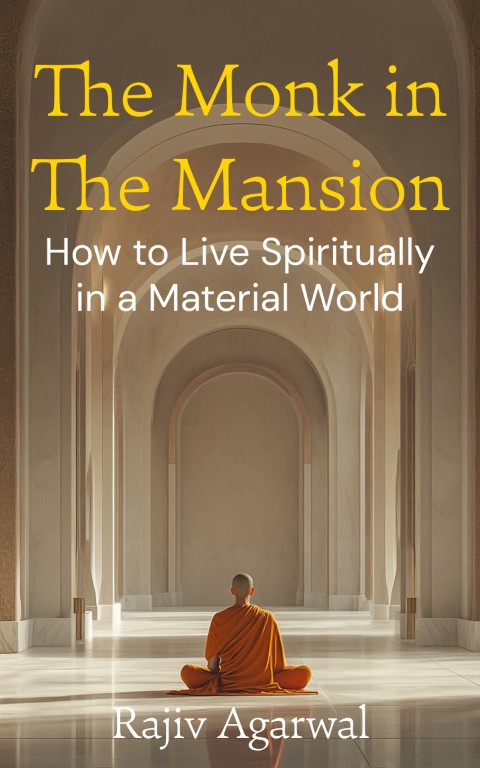
3 Responses
Strangely comforting to read these words. My grandmother used to say that facing death is like stepping into a room you’ve always known, but just forgot for a while. Krishnamurti somehow brings that same gentle knowing—I’m reminded not to resist what comes, but to meet it with honesty. In quiet moments, that brings a little peace.
Die to yesterday, he kept saying.
Not in a hospital room, but in the hallway of the mind.
If his last words hint that no one got it,
I hear a bell during class:
drop the notes, look directly.
No heir, no method.
Just attention so plain it burns away the past.
That feels scary and clean at the same time.
Reading his last moments feels like looking at a sky that refuses to be owned.